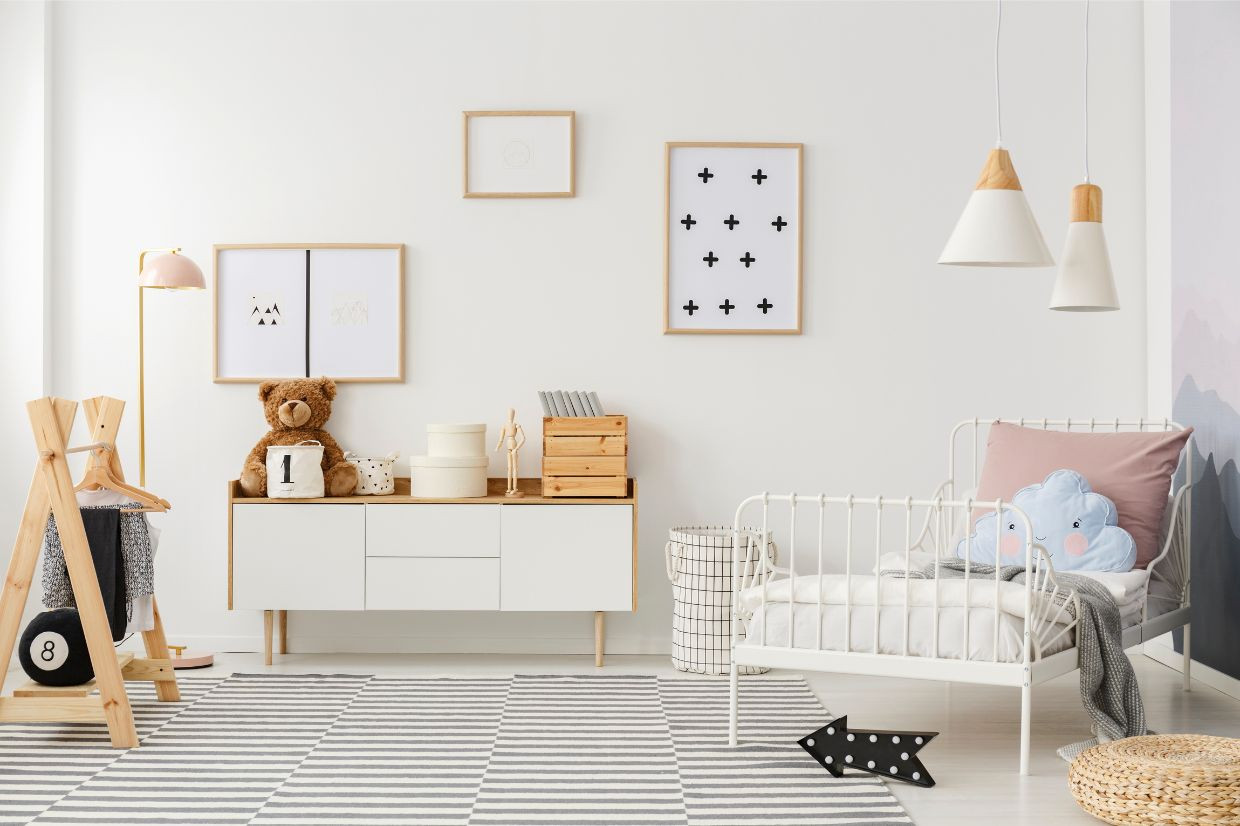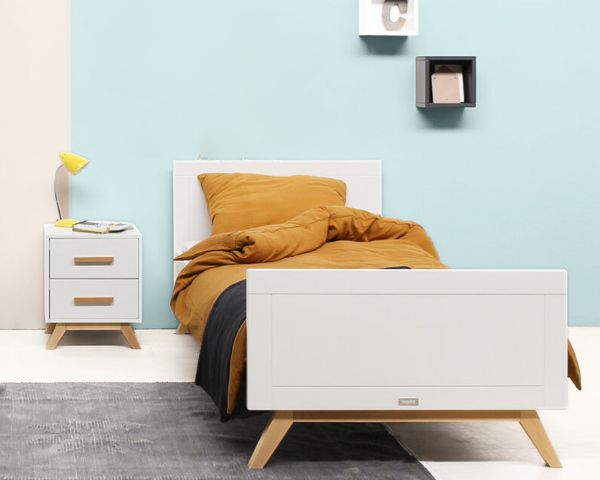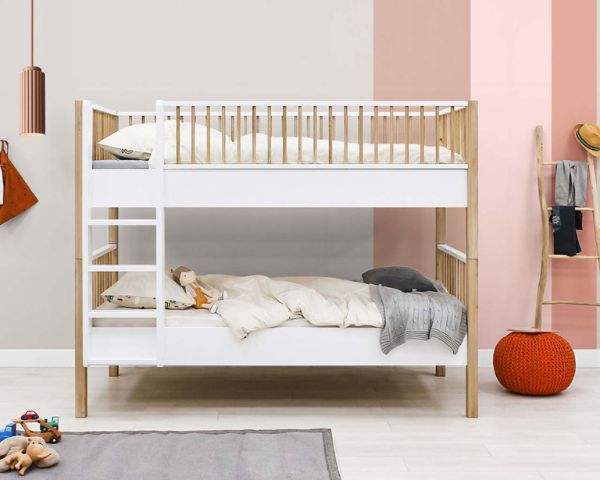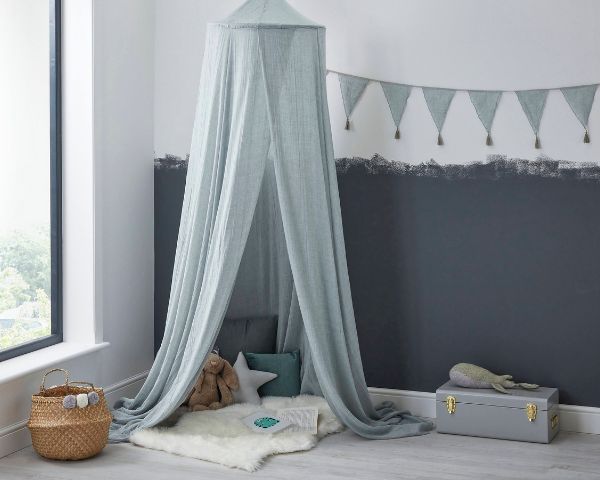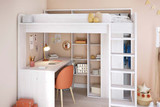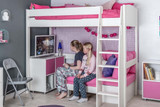How to Create a Scandi Kids Bedroom
Designing a bedroom for your child is not just about creating a place to sleep. It's also about fostering their imagination, sparking their creativity, and providing a safe haven where they can grow and thrive. If you're in search of an interior style that beautifully combines aesthetics with functionality, look no further than Scandinavian design.
Originating from the Nordic countries of Denmark, Norway, Sweden, and Finland, Scandinavian design is renowned for its clean lines, minimalism, and emphasis on the simple joys of life. It's a design philosophy that has captivated the world with a style that’s accessible whatever your budget.
In this blog post, we're going to explore how Scandinavian design principles can be applied to kids' bedrooms. From choosing kids beds to accessories and colour choices, we’ll explore how to create spaces that are not only visually pleasing but also nurturing for your little one's development.
From a soothing colour palette to multifunctional furniture and clever storage solutions, Scandinavian design has much to offer when it comes to welcoming, organised, and aesthetically pleasing children's bedrooms. So, let's dive into the world of Scandi interiors…
What is Scandi Style?
Scandinavian interior design, often referred to as Scandi or Nordic design, is a popular design style known for its simplicity, functionality, and minimalism. These are some key features of Scandinavian home design to look out for:
- Minimalism: Scandinavian design emphasises a clutter-free and minimalistic approach. Spaces are typically kept clean and uncluttered, with an emphasis on simplicity and functionality. Keeping the space clutter-free is a challenge for kids' bedrooms, but it’s integral to the Scandi aesthetic. Minimalist design ensures that only essential items are included, which helps create a calming and focused environment for children to play, study, and sleep. This means plenty of storage is essential!
- Neutral Colour Palette: A predominant feature of Scandi design is the use of a neutral colour palette. Whites, greys, and muted pastels are commonly used to create a sense of calm and tranquillity. These neutral colours are often paired with natural wood tones to add warmth to the space. They'll help to give your child's bedroom a serene and uncluttered atmosphere. Plus, the neutral backdrop allows for easy changes in décor as the child grows.
- Natural Materials: Scandinavian design places a strong emphasis on natural materials such as wood and textiles made from natural fibres. These materials add texture and warmth to the otherwise neutral and clean spaces. Wooden furniture, such as cots and childrens beds can be chosen for durability and a timeless look.
- Functional Furniture: There’s a strong emphasis on functional furniture in this design style. In a child's bedroom, this translates to pieces like convertible cots that can be transformed into toddler beds, bunk beds for shared spaces, and storage solutions like dressers and shelving units that keep the room organised. This can be a very practical option where bedroom space is limited. Mid sleepers and loft beds can combine storage and study onto one. Likewise, multipurpose furniture like our Wells Fold Away Desk help to free up space when not in use, while fitting in with the design aesthetic too.
How to Design a Scandinavian Style Kids Bedroom
Here’s our step-by-step guide to designing an environment that encourages creativity, learning, and, most importantly, a happy space for your child.
1. Plan & Gather Inspiration
Start by researching Scandinavian design principles and gather inspiration from magazines, websites, and social media platforms. Perhaps get started with a Pinterest board to gather all your ideas into one place.
Identify the key elements you want to incorporate into the room, such as a neutral colour palette, natural materials, and functional furniture.

2. Declutter and Organise
Begin by decluttering the existing room. Remove unnecessary items and toys to create a clean canvas.
You can do this by setting clear goals and gathering supplies like bin bags and labels, and involving your child in the process. Sort items into "keep," "donate or give away," and "dispose of or recycle". It’s important to be selective about what to keep and to encourage your child to part with items they've outgrown. Dispose of unwanted items and charity donations promptly, then clean and maintain the room regularly to prevent clutter build-up.
Once you’ve established what to keep, create an organised system using storage solutions like bins and shelves, and implement rotation systems for toys. Tackle clothing, shoes, and accessories, and organise the wardrobe and drawers with dividers or organisers.
Implement routines for daily and weekly clean-ups, involving your child in the process, and use visual aids like checklists or charts to help them stay on track. Lastly, be consistent in maintaining the organisation. Carry out periodic checks and make adjustments as needed to ensure the room remains clutter-free and functional. Celebrate the accomplishment with your child and emphasise the benefits of a tidy, organised space for them to enjoy and thrive in.
3. Choose a Neutral Colour Scheme
Select a neutral colour palette consisting of whites, light greys, soft pastels, or light blues. As we’ve noted above, these colours create a calming backdrop in keeping Scandinavian design.
White is a quintessential colour in Scandinavian design. With this in mind, try selecting various shades of white as your primary base colour. These can range from pure white to off-whites with subtle undertones, such as warm cream or cool greyish-white.
Soft pastels like pale pink, powder blue, and mint green are often used in Scandi design to infuse subtle colour without overwhelming the space. They’re ideal for kids’ rooms and can be introduced through decor items like cushions, throws, and artwork.
4. Find the Right Kids Bed
Prioritise functional furniture pieces, such as bunk beds with storage options, or high sleeper beds with desk and sofa bed underneath. Consider beds with built-in storage drawers or shelves underneath to maximise space efficiency.
Likewise, Scandinavian-style kids beds should be versatile and able to adapt as your child grows. Look for beds that can be easily transformed or extended, such as daybeds that can be used for seating during the day. A mid sleeper bed that has a pull-out desk for study, which can be pushed under the bed for playtime is another good example.
Look for furniture with clean lines and a minimalist design, so avoid ornate or overly decorative options. Opt for a bed frame made from solid wood, preferably in white, or go for light, natural wood tones like pine, oak, or birch. These materials add warmth and a connection to nature.
Scandinavian design also values quality and craftsmanship. Look for well-made beds from reputable manufacturers to ensure longevity and durability.
5. Maximise Natural Light
Large windows with light, flowing curtains are a hallmark of Scandinavian design. Maximising natural light in a child's room also helps to create a bright and cheerful atmosphere. Light, flowing curtains or blinds are a way to allow in as much daylight as possible.
If your child’s room has limited natural light, then there are a few things you can do to amplify the light it does get. You’ll already be working with a light coloured paint palette for the walls and furniture, but don’t forget the floor too. This can help to bounce the light around the room just as much as wall colours. Try a strategically placed mirror to reflect light deeper into the room and make sure any trees or branches that might be blocking light to the room are trimmed. Ensure that your windows are squeaky clean too!
Whilst it’s important to maximise natural light during the day, don’t forget your lighting options for night time too. You’ll want to install lighting that covers how the room will be used by your child. This includes ambient, task, and accent lighting, which will create a well-lit and inviting atmosphere. Opt for fixtures that align with the Scandinavian aesthetic, such as minimalist pendant lights.
6. Accessorise with Texture and Personalisation
While Scandinavian design tends to be minimalistic, it’s important to include personal touches that reflect your child's personality and interests. This can include artwork, wall decals, or themed décor that can easily be updated as your child's tastes change.
Soft, cosy textiles like wool rugs, sheepskins, and comfortable bedding can add warmth and comfort to the room. Plush cushions and throw blankets can create inviting reading nooks or play areas. A corner for imaginative play, a study area for schoolwork, and a snug hideout for reading can all coexist harmoniously in a well-designed Scandinavian-style kids' bedroom.
In conclusion, the Scandinavian design ethos emphasises simplicity, functionality, and a connection to nature. This offers a harmonious and nurturing backdrop to create inspiring kids' bedrooms. These spaces are not just aesthetically pleasing; they're also designed to encourage creativity, organisation, and a sense of calm.
By embracing a neutral colour palette, natural materials, and smart storage solutions, you can craft a Scandinavian-style kids' bedroom. You’ll foster your child’s imagination and provide a comfortable sanctuary for their growth and development. And remember, while Scandinavian design sets the foundation, it's the personal touches, cherished toys and memories that truly make the room come alive. So, embark on this design journey with confidence, and watch your child's room transform into a haven of creativity and serenity.
Recent Posts
-
Unlocking the Potential of High Sleeper Beds for Teenagers
As teenagers go through all the ups and downs of being a teen, their likes and dislikes change a lot
-
Choosing Between a High Sleeper Bed vs. Mid Sleeper Bed
As your little one grows, so do their needs, and finding the perfect kids’ bed for them becomes







